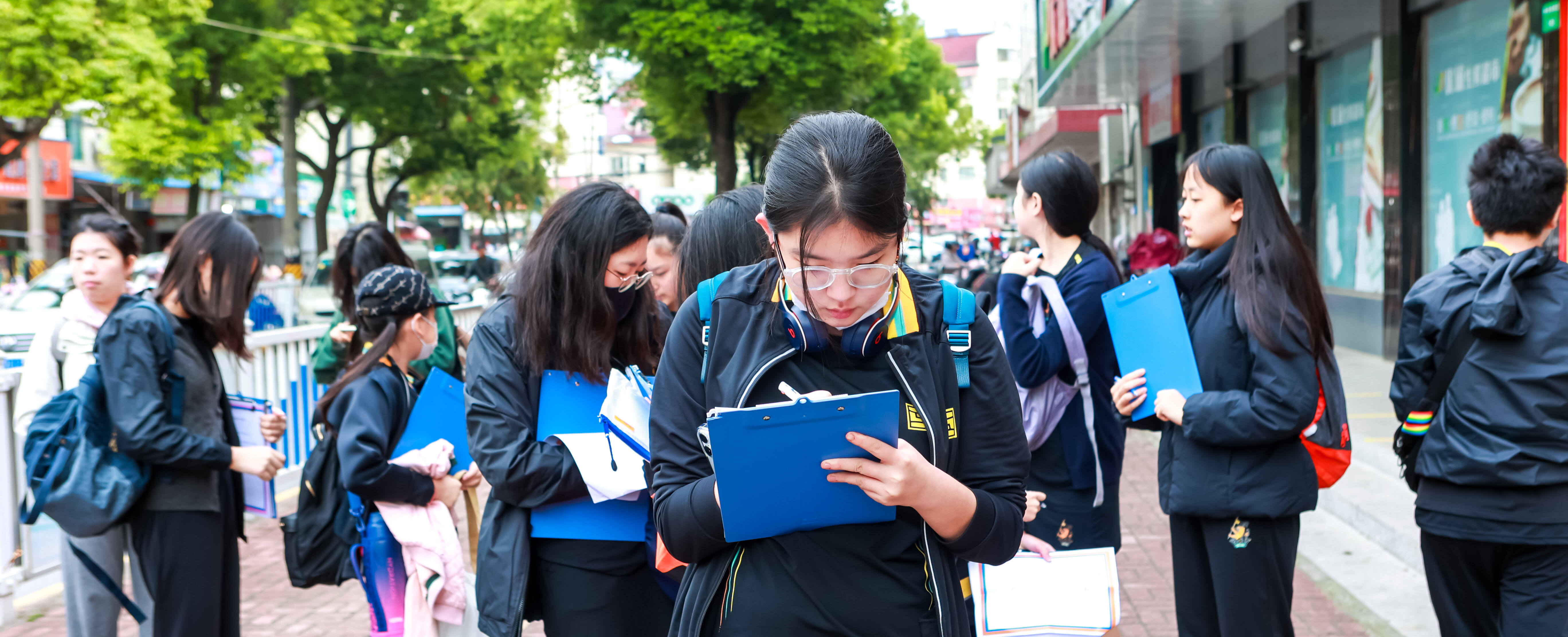
Hiba Academy Shanghai introduced the Academic Scholarship Programme for pupils in the 2020 academic year. The programme recognises outstanding academic achievement and all-round excellence. Recipients exhibit leadership potential, an exemplary behavioural record, unfailing kindness and an ability to act as a mentor and role model to their peers. In 2020, four Hiba Academy Shanghai pupils were recognised with such honours.
—— Editor's Note
Meet Maggie, the Scholar
This week, we talk with grade 8 pupil Maggie. She is captain of De house and a lover of science and maths as well as design visual arts. Maggie is versatile pupil who exhibits a capacity for deep thinking. Her Hiba education has helped her to develop analytical skills and formulate opinions on a variety of subjects, from social issues to arts and culture. It certainly showed in our conversation, which went far beyond her studies and her grades.
.jpg)
Exploring the human condition through art
From Maggie’s art creations, we can see that she is a sensitive and thoughtful pupil. The philosopher Arthur Schopenhauer famously remarked, “The world is my will, the world is my representation,” this may explain why Maggie likes to express herself through art.
In addition to capturing her emotions in her artwork, Maggie wants to share her musings on the physical and spiritual world. Her works asks penetrating questions about the role religion plays in contemporary life: “Do we still need religion in our world?” “How does religion show its power?”
Maggie speaks in depth with us about representations of the divine in medieval European art. She explains to us how, at that time, God was the central theme and was portrayed as separate from and superior man. She contrasts it with God's representation in contemporary art, which often assigns greater primacy to man, if it even depicts God at all.
Maggie's understanding of religion reflects her affirmation of the inherent value of human beings and her own sense of self-worth. This is a crucial period in any pupil's life, a time when core values are formed, and her artwork shows that she is rigorously interrogating the world and her place in it.
When asked about her thoughts on the nature of art, she argues that it is anything but utilitarian. It is simply the result of a natural desire to create. In fact, anything that fulfils the artist's expressions can be seen as art. Whether it is graffiti on the street or a collection in a museum, art should be explored from the perspective of its creator.
To Maggie, art is a highly subjective pursuit and the medium through which she explores timeless questions about religion and spirituality.
Drawing connections between art and the natural world
In terms of academics, science is Maggie’s passion. She believes science and maths are much more than facts and figures taught in class. Rather, they are they symbols we use to understand, interpret and give meaning to the origins of the universe.
Walking the halls of the sixth floor, we encounter a display on the wall that features several fundamental scientific formulas. The basic computation of "1+1=2" immediately catches her eye. She remarks that in an increasingly complex world, the best solutions are often the simplest.
This ability to cut though the complexity and get straight to the fundamental nature of things shows tremendous insight and powers of observation. She has a talent for finding connections between seemingly unrelated phenomena.
Naturally, it informs how she interprets and appreciates art. She uses Van Gogh's ‘Starry Night’ as an example. A scientist, she explains, developed a bold hypothesis about the paintings distinctive swirling brush patterns. Its starry sky bears a striking resemblance to a phenomenon in fluid dynamics called 'turbulence', she tells us.
She goes on to explain how scientists have used the mathematical formula that describes turbulence to analyse the patterns in this painting. The structures bore a striking to similarity to how turbulence behaves in the natural world. Similar observations have been made in Edvard Munch's 'The Scream' as well. She ponders that one cannot help but draw a connection between the turbulence in these paintings and the turbulent emotional state these artists likely were in when creating these works of art.
Equality is the society's greatest challenge
Maggie resists the idea of labels. She believes that identifying one another in terms of race, gender, and social class is discriminatory. This is something she has thought a lot about in her English social studies class. She tells us how her teacher presented on how being a mother can disadvantage women in the workplace. This data, she says, confirms her thesis about labels. In this case, labelling a woman with the word 'mother' ultimately means lower pay for her — the essence of inequality and discrimination.
Inequality, she says, is one of the biggest problems society faces today. She believes that we are all individuals who are defined by a multitude of identities, and it is us up to us define our own value in society. Moreover, she believes people should move past their differences and instead seek common ground while celebrating what makes each of us unique.
How do we accomplish this? A good education is a great place to start, and she is well on her way with her Hiba scholarship.